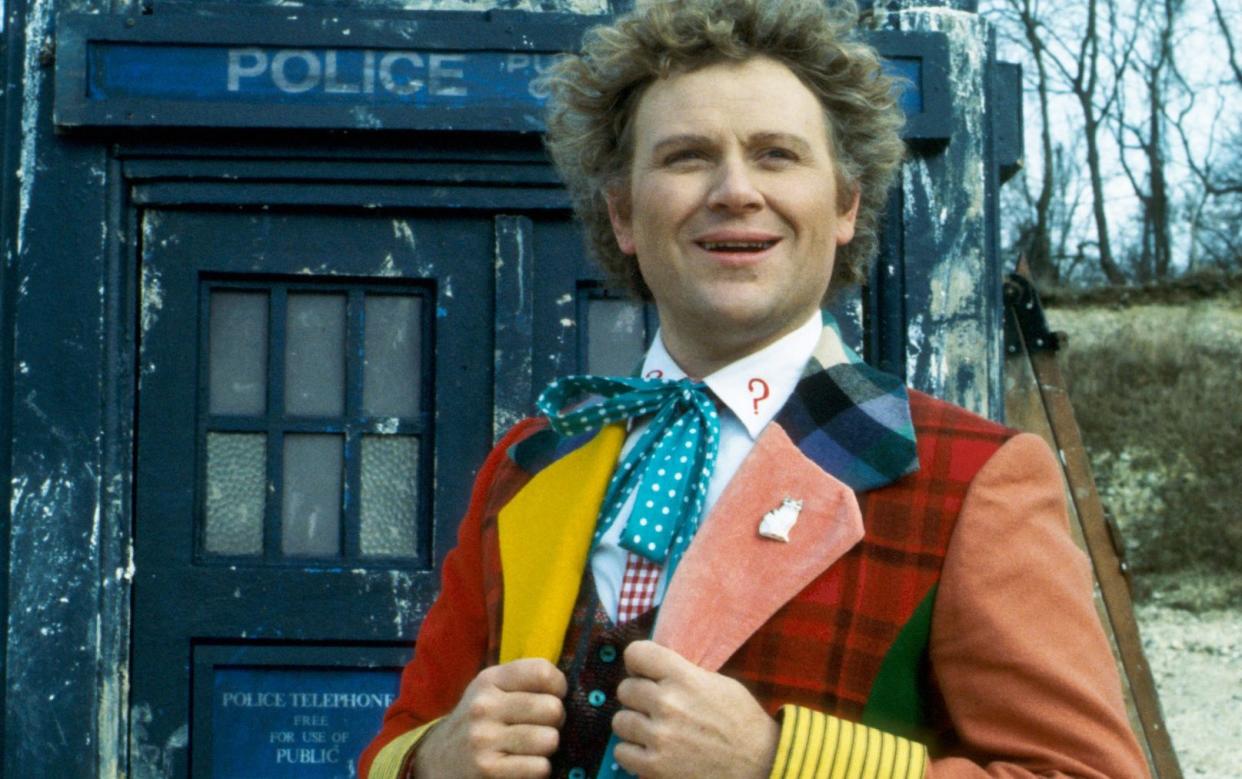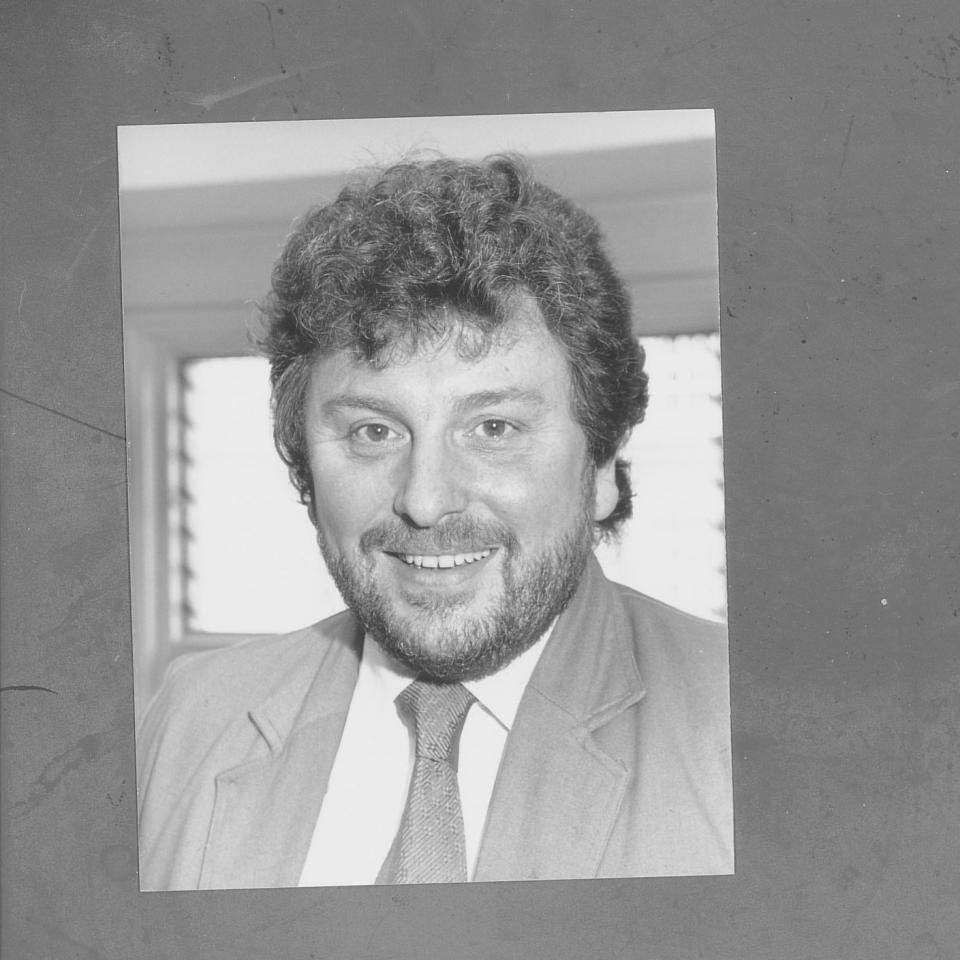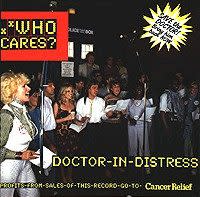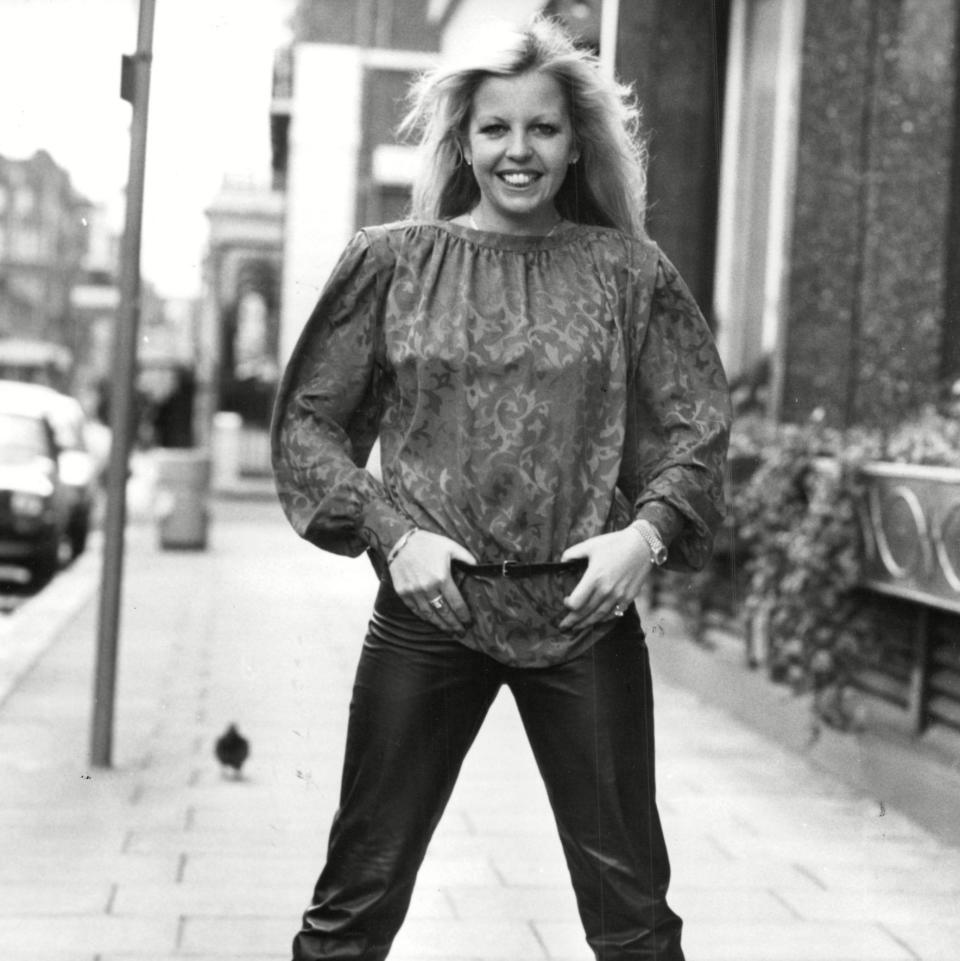Doctor Who, the BBC and the saga of the worst charity single of all time

A new Netflix documentary – optimistically titled The Greatest Night In Pop – is throwing fresh light on the making of We Are The World, the American charity record released in March 1985, hot on the heels of Band Aid’s Do They Know It’s Christmas? But there was another charity protest record released that month featuring a gaggle of singing celebrities gathered in a recording studio. You’re not going to believe what I’m about to tell you. But I guarantee it’s all true.
In February 1985 the front page of The Sun screamed DR WHO AXED IN BBC PLOT. The decision to exterminate Doctor Who had been taken by Michael Grade, Controller of BBC One, and Jonathan Powell, Head of BBC Drama. Their dislike of Doctor Who united these two execs with extremely disparate CVs – Grade the showman, Powell the very high-minded former producer of high-end fare such as Tinker Tailor Soldier Spy and The Barchester Chronicles. They were axing a show where scripts for the next series were already written, plans laid, directors hired, thus writing off thousands in license fee money; an unprecedented move. They really hated it.
The essential problem with Doctor Who at this time (which less antagonistic execs might have spotted and rectified) was not its tiny budget; it had, after all, been very popular for many years despite its wonky sets and wobbly monsters. The issue was with scripts. After the perceived excesses of Tom Baker in the role, producer John Nathan-Turner turned the volume of the lead character right down with Peter Davison, and then back up – up, up, UP! – with his successor Colin Baker. Both are fine actors who were very badly served. But if you remove the loveably cheeky nature of Doctor Who himself, and make him first bland then boorish, you’re left with a creaky, crass and very cheap-looking children’s sci-fi show.

Here we must stop to dwell on John Nathan-Turner, known to all at the BBC as JNT. (Michael Grade, hilariously, thought his name was Jay Entee.) He was a very curious character, sporting a luxuriant beard and a spectacular mop of glossy ringlets. He revelled in the attention given to him by Doctor Who fans – he enjoyed jetting off to American Dr Who conventions and became known there for wearing gaudy Hawaiian shirts and using catchphrases such as “stay tuned” or “I am surprised and delighted”. This was very peculiar behaviour for a TV producer.
Acting under cover – more extraordinary behaviour – JNT leaked the news of the axing to the tabloids. The resulting press storm forced Grade and Powell to backpedal, releasing a statement that Doctor Who would return for another series, just a little later.
Then came JNT’s most bizarre move yet. His life partner, and occasional floor manager on Doctor Who, Gary Downie – inspired by Band Aid and, one suspects, by a vat of BBC vin ordinaire – came up with the idea of a charity pop record to demand the absolutely immediate return of Doctor Who. The first thought that occurs to everyone when they hear about this – that the slight delay in the production of a TV show pales somewhat next to the Ethiopian famine – never seems to have struck JNT or Downie.

Enter another pyrotechnic character. This is the DJ and record producer Ian Levine, a fervent Whovian apostle, then a friend of JNT and Downie. He was then, and still is, a very hot-blooded chap, permanently on edge from the fear that the thing he loves – Doctor Who – is being taken away or traduced. At the time, Levine was a big name on the dance music scene, writing, producing and remixing international hits such as Evelyn Thomas’s High Energy and a glut of similarly bombastic electronic songs of the genre previously known as “gay disco” or Boystown, but which became Hi-NRG.
This was a kind of supercharged retooling of disco with its slinky, funky feminine vibe reduced, and the endless repetitive bash bash bash/release of male sexuality pumped up. Hi-NRG is never subtle – but even for this genre, Levine’s oeuvre (glorying in titles like So Many Men, Such Little Time and The Boys Come To Town) are outrageously torrid.
In short order, Levine wrote Doctor In Distress and created a backing track (aided, in another unbelievable moment, by Hans Zimmer – yes, Hans Zimmer, Oscar-winning composer of scores for The Lion King, Rain Man and Dune).
Another strange thing here. Do They Know It’s Christmas is a peculiar, mournful song with its African drums and a synth line that weirdly sounds a bit like the middle eight of the Doctor Who theme. We Are The World is a sickly slush of deracinated 1970s soul. They are both oddly out of time. But Doctor In Distress sounds contemporary; everything about it screams March 1985, all hammering Linn drums and discordant synthesised stabs. It clatters, clangs and crashes – it sounds like someone having a poppers-induced heart attack on an assembly line.
Now it was time for the celebrities to add their magic, coming together under the banner of Who Cares. (I’ll leave you to make your own joke here.) Initial media reports suggested that Elton John and members of Frankie Goes To Hollywood – then unimaginably hot – were lined up.
But instead, Who Cares were a ragtag constellation of far dimmer stars – including Sally Thomsett (third lead in 1970s sitcom Man About The House), David van Day from Dollar, Bobby from Bucks Fizz, the doyenne of gay clubs Hazell Dean, and Rick Buckler, former drummer of The Jam. Justin Hayward of The Moody Blues sounds ashamed, as well he might. There’s a moment when you think Dolly Parton has taken a solo line, but this is in fact impressionist Faith Brown.
Now we come to the lyrics. After a massed chorale of “Eighteen months is too long to wait, bring back the Doctor don’t hesitate!”, we get a potted history of Doctor Who delivered a line each by the celebs and by Colin Baker and his co-star Nicola Bryant. The words are very firm in talking of “the Doctor” and his “companions” – this is how fans refer to Doctor Who and his assistants. If you are ever corrected on that by someone, it is your cue to run like hell.

We learn that Doctor Who is ‘a legend that no other could replace’. In 1985, nobody thought this – it was just a tacky old TV show enjoyed only by nerds (a position it has now, forty years on, ironically returned to). We hear that the heroes of the show, when faced with danger, “didn’t run, they didn’t hide” – when they always did. Another highlight is the line “Each screaming girl just hoped that a Yeti wouldn’t shoot her” – recognisable words in themselves, but surely never arranged in that order before or since.
American diva Phyllis Nelson, very shortly after to have a smash hit with the soul ballad Move Closer – and whose voice could swallow every other weak warble in that studio – screams “No no no no NO!” as if the universe is about to explode.
This was all captured on camera for a video by more helpful Doctor Who fans. Unfortunately, they’d forgotten to flick on the colour switch of said camera, videotaping the proceedings in blurry black and white. This was remedied by tinting and shrinking the footage to a tiny square, which was then superimposed on some stock space-age animation of the Tron variety. It looks, appropriately, awful.
The proceeds from the single were earmarked for Cancer Research – but to nobody’s surprise, it stiffed, and never recouped its expenses. Radio 1, unsurprisingly, refused to play it.
One wonders what JNT hoped to achieve – that the record would be a smash and shame Grade and Powell into rushing Doctor Who back into production? They’d already been bounced into reprieving it. JNT styled himself as a grand master of publicity, but the reaction of most people in the 1980s to Doctor Who was “I had no idea that was still on!”
The only effects Doctor In Distress had were bad ones. Colin Baker later revealed that he had been coerced into appearing on it, despite serious misgivings about criticising management in public. JNT kept his job on Doctor Who, with Powell later admitting: “What else was I going to do with f______ John Nathan-Turner?” But after filming the 1986 series, Baker was fired. Ian Levine fell out with JNT shortly afterwards and went on to huge successes with the Pet Shop Boys and Take That. He is very embarrassed by this whole affair – and you’d think he was an unembarrassable man.
But I remain strangely fond of Doctor In Distress, as one of those cultural artefacts you can’t quite believe exists. It is a bit of an earworm. I still very occasionally find myself humming it as I’m cleaning out lint from the tumble drier. It is a strange and awful thing, yes. But what a world, that has such terrible wonders in it.


